Gardening can be a rewarding hobby, but it can also be confusing. One common question that new gardeners have is about the difference between gardening soil and potting soil.
While they may seem similar, there are some critical distinctions that can significantly impact the success of your plants.
This article will break down those differences between gardening soil and potting soil and help you choose the right soil for your needs.
Gardening Soil
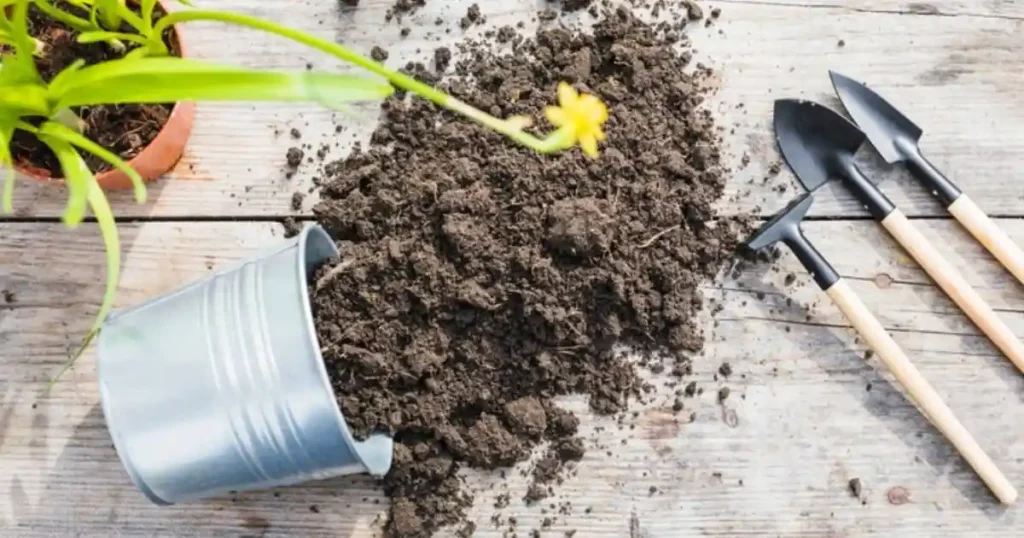
Gardening soil, also known as garden soil or in-ground soil, is the natural soil found in your garden beds. It’s typically a blend of minerals, organic matter, and living organisms.
This type of soil is ideal for plants growing directly in the ground because it provides:
- Structure: The mineral content of garden soil, such as sand, silt, and clay, creates a stable base for plant roots to anchor themselves.
- Nutrients: Organic matter in the soil, like decomposed leaves and compost, provides essential nutrients for plant growth.
- Drainage: A well-balanced garden soil allows excess water to drain away, preventing root rot.
- Aeration: The soil structure allows for air pockets, which are crucial for healthy root development.
Potting Soil
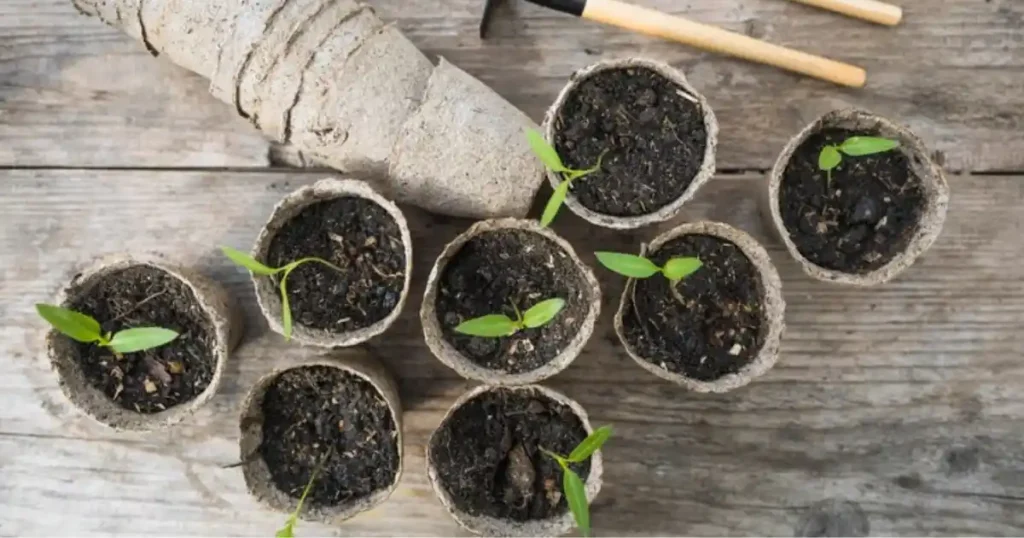
Potting soil, also known as potting mix, is a soilless growing medium specifically formulated for container gardening. It typically consists of a blend of ingredients like:
- Peat Moss: Provides water retention and aeration.
- Vermiculite: Improves moisture retention and aeration.
- Perlite: Enhances drainage and aeration.
- Compost: Adds essential nutrients.
- Bark: Improves drainage and provides some nutrients.
Potting soil is designed to provide the ideal environment for plants growing in pots, where conditions differ significantly from the ground.
Why the Difference Matters
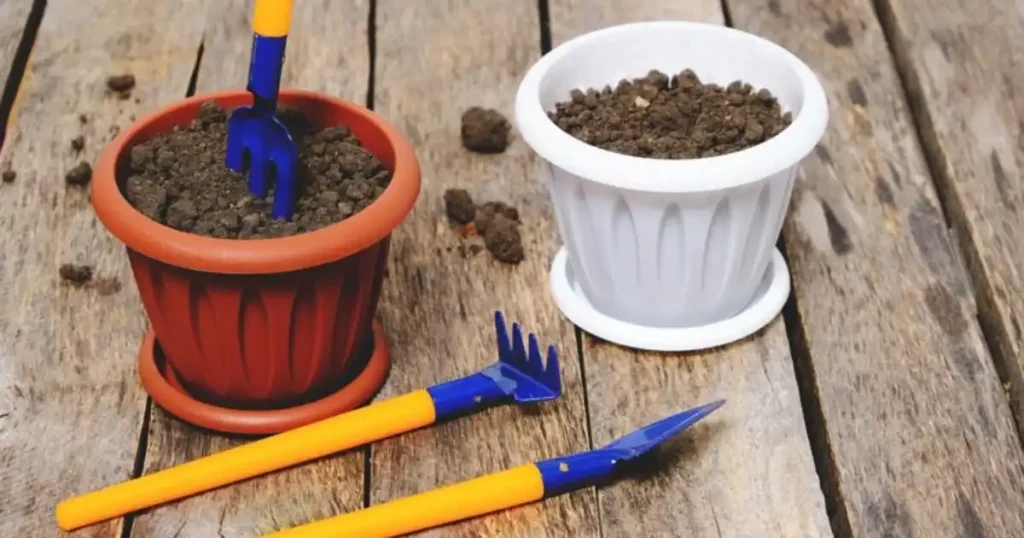
The main reason for the difference between gardening soil and potting soil lies in the unique challenges faced by container plants.
- Limited Space: Plants in pots have a restricted root zone and access to nutrients.
- Drainage: Containers can retain excess moisture, leading to root rot if the soil doesn’t drain well.
- Aeration: Potting soil needs to provide adequate air circulation to prevent the roots from suffocating.
Potting soil addresses these challenges by providing a lightweight, well-draining, and nutrient-rich environment that promotes healthy growth in confined spaces.
Differences Between Gardening Soil and Potting Soil
The difference between gardening soil and potting soil is given as follow:
| Feature | Gardening Soil | Potting Soil |
|---|---|---|
| Composition | Minerals, organic matter, living organisms | Peat moss, vermiculite, perlite, compost, bark |
| Texture | Varies depending on location | Lightweight and fluffy |
| Drainage | Can vary; may need amending | Excellent drainage |
| Aeration | Can vary; may need amending | Excellent aeration |
| Nutrients | Varies; may need amending | Contains added nutrients |
| Weight | Heavy | Lightweight |
| Cost | Generally less expensive | Generally more expensive |
| Ideal Use | In-ground gardens, raised beds | Containers, pots, hanging baskets |
Which One is Better for Indoor Plants?
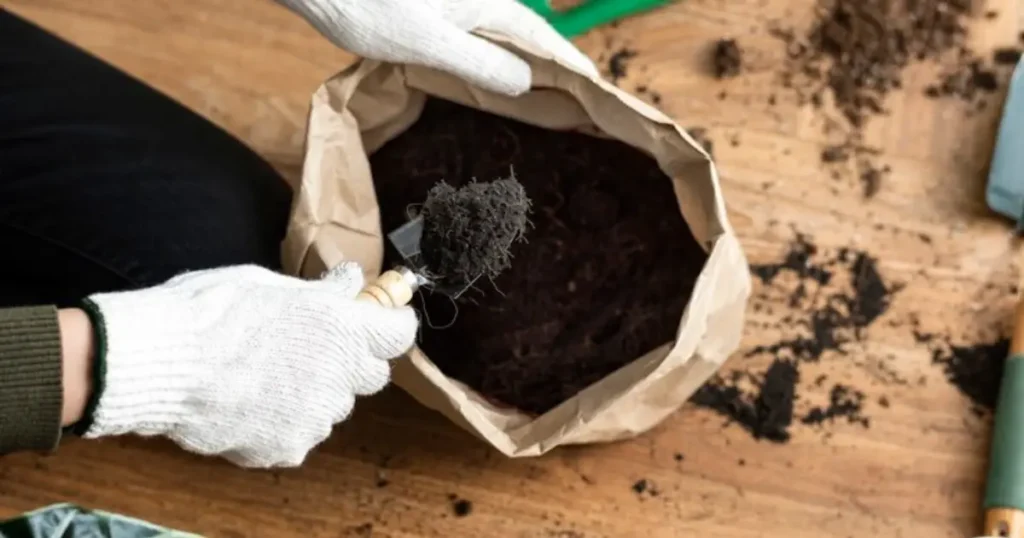
Potting soil is the preferred choice for indoor plants. Its lightweight and well-draining properties are crucial for preventing overwatering and root rot, common problems with indoor plants.
The added nutrients in potting soil also ensure that your indoor plants have the necessary resources for healthy growth.
https://gardeninsight.net/can-you-use-garden-soil-for-indoor-plants/: Difference Between Gardening Soil and Potting Soil: 5 Mistakes That Kill Your Plants!Difference between ground soil and potting soil
Understanding the difference between in-ground soil and potting soil is crucial for successful gardening. In-ground soil refers to the native soil found in your garden, composed of minerals, organic matter, and microorganisms.
It’s often dense and compacted, providing structural support for plants. Potting soil, on the other hand, is a specially formulated mix designed for container gardening. It’s typically lighter, fluffier, and more porous than in-ground soil, ensuring proper drainage and aeration for potted plants.
Choosing the right soil type is essential for healthy plant growth and optimal yields, whether you’re planting in the ground or in containers.
Can Gardening Soil be Used in Pots Instead of Potting Soil?
While it’s possible to use garden soil in pots, it’s not generally recommended. Garden soil can become compacted in containers, hindering drainage and aeration.
This can lead to root rot and other problems. If you must use garden soil in pots, amend it with materials like compost, perlite, and vermiculite to improve its drainage and aeration.
Main Ingredients in Potting Soil
Potting soil typically contains a blend of peat moss, vermiculite, perlite, compost, and bark. Each ingredient plays a vital role in creating a healthy growing environment for container plants.
Peat moss provides water retention, vermiculite improves moisture retention and aeration, perlite enhances drainage, compost adds nutrients, and bark improves drainage and provides some nutrients.
Nutritive differences Between Gardening Soil And Potting Soil
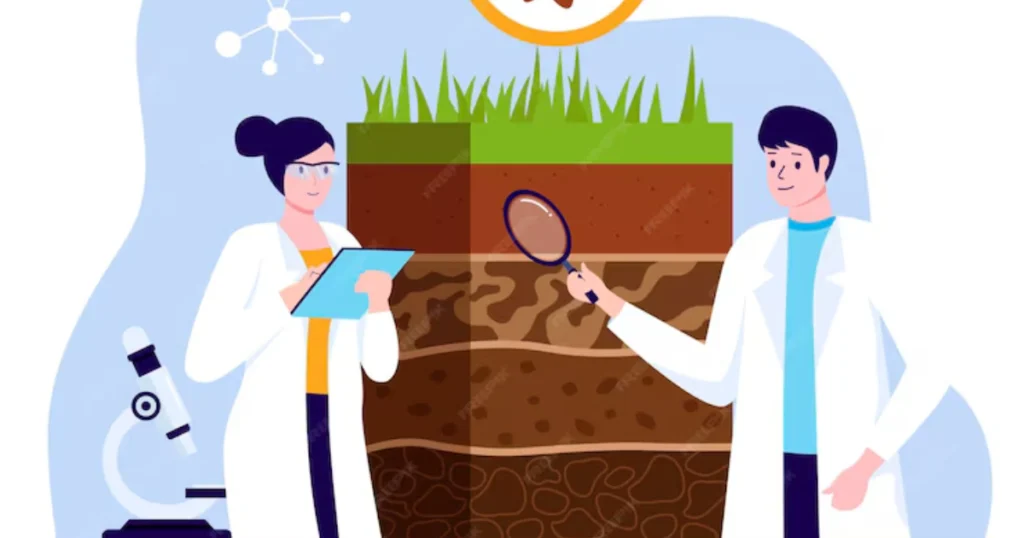
Gardening soil can vary significantly in nutrient content depending on the location and soil type. Potting soil, on the other hand, typically contains added nutrients to support plant growth in a confined environment.
This ensures that container plants have access to the essential nutrients they need, even with limited root space.
Is Potting Soil Better for Flowers or Vegetables?
Potting soil is suitable for both flowers and vegetables grown in containers. Its well-draining and nutrient-rich properties support the growth of various plants.
However, you may want to choose a potting mix specifically formulated for your type of plant for optimal results. Some potting mixes are designed for flowering plants, while others are tailored for vegetables or herbs.
Do You Need to Mix Potting Soil with Gardening Soil for Best Results?
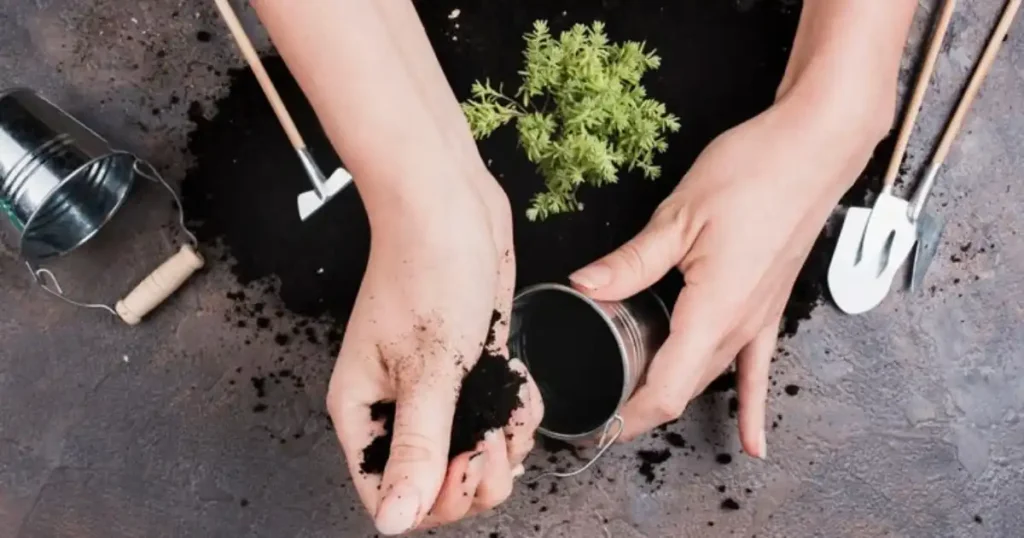
Mixing potting soil with garden soil is generally not recommended, especially for container gardening. Garden soil can compact in containers, affecting drainage and aeration.
However, if you’re using potting soil in a raised garden bed, you can amend it with some garden soil to improve its water retention and provide a more stable base for plant roots.
Benefits of Using Potting Soil over Gardening Soil
Potting soil offers several benefits over garden soil, especially for container gardening:
- Improved Drainage: Prevents overwatering and root rot.
- Enhanced Aeration: Promotes healthy root development.
- Consistent Quality: Provides a uniform growing medium.
- Disease-Free: Reduces the risk of soil-borne diseases.
- Lightweight: Easier to handle and transport.
Choice Between Gardening Soil and Potting Soil for Planting
The choice between gardening soil and potting soil depends primarily on where you’re planting. Use gardening soil for in-ground gardens and raised beds.
Choose potting soil for containers, pots, and hanging baskets. Consider the specific needs of your plants and the growing conditions when making your selection.
Conclusion
Understanding the difference between gardening soil and potting soil is essential for successful gardening. By choosing the right soil for your plants and their growing environment, you can provide them with the best foundation for healthy growth and abundant yields.
Remember that gardening soil is ideal for in-ground gardens and raised beds, while potting soil is the preferred choice for container gardening.
Consider the specific needs of your plants, the growing conditions, and the information provided in this article to make informed decisions about your soil selection. Happy gardening!
FAQs about Gardening Soil and Potting Soil
Some of the frequently inquired questions about the key differences between gardening and potting soil are as follow:
What’s the Difference Between Raised Gardening Soil and Potting Soil?
Raised garden soil is specifically designed for raised beds, with a mix of compost, natural soil, and organic matter. Potting soil is lighter and optimized for containers, making it unsuitable for large outdoor beds.
What’s the Difference Between Topsoil, Gardening Soil and Potting Soil?
- Topsoil: Basic soil from the uppermost layer, often low in nutrients.
- Garden Soil: Enhanced topsoil mixed with compost and organic matter.
- Potting Soil: A soilless blend for containers with excellent drainage.
Can You Use Bagged Garden Soil in Pots Instead of Potting Soil?
Bagged garden soil is denser than potting soil and may not provide adequate drainage for pots. Combining it with perlite or potting soil can improve its usability in containers.
What’s the Difference Between Garden Soil and Potting Mix?
Garden soil contains natural soil and organic matter, while potting mix is a lightweight, soilless blend formulated for potted plants.
How Do You Choose Between Potting Soil and Garden Soil for Plants?
Assess whether the plants will grow outdoors or in containers. Use gardening soil for outdoor planting and potting soil for containers or indoor plants.
